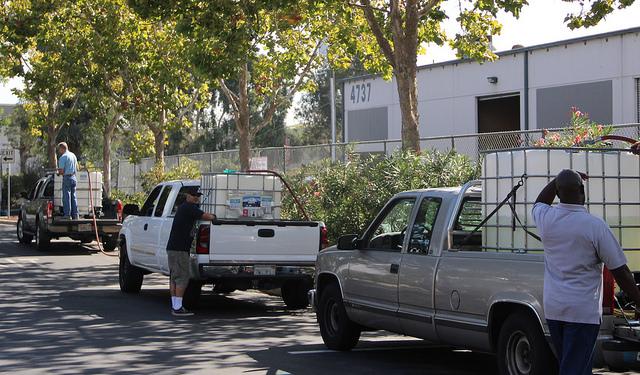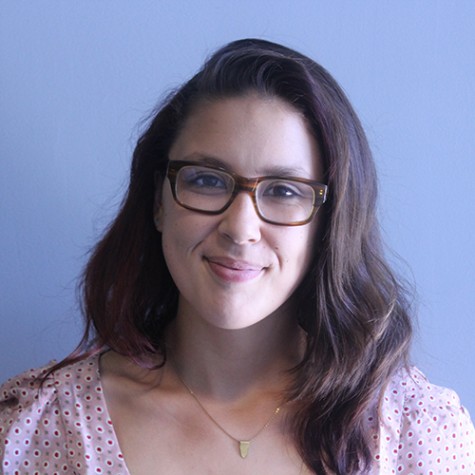Drinking sewage water is the future
Contra Costa citizens line up to get recycled water for irrigation from the Central Contra Costa Sanitary District in Martinez on Oct. 8, 2015.
October 8, 2015
We have plenty of water, as long as we cut the crap.
The common reaction when you hear “sewage” and “drinking water” connected in the same sentence is to respond with something along the lines of “eww,” or “gross,” or variations thereof. But the two might be closely connected, and sooner than you think.
Since Gov. Jerry Brown’s demand for a 25 percent reduction in urban water use, the state has met those needs and then some. This past August alone, the East Bay Municipal Utility District reported a 27 percent cut back and Contra Costa Water District reported a 40 percent drop in consumption for it’s residential usage.
“This shows our customers are taking the drought seriously and doing what we asked for,” Abby Figueroa, a spokeswoman for the East Bay Municipal Utility District, told the Contra Costa Times Sept. 29.
The Dublin San Ramon Services District, however, is still unsatisfied. There is simply no way of being absolutely sure that El Niño will bring the amount of water needed to quench our states thirst. As a result, they have proposed the rather outlandish idea of purifying sewage water and reverting it back to drinkable tap water.
This is not a new concept. Since 2003, Singapore has relied on this “NEWater” micro filtration system created by the Public Utilities Board (PUB) which uses advanced membrane technologies and ultra-violet disinfection systems to treat sewage water. This system provides 30 percent of Singapore’s total water requirements. They state that the quality of the filtered sewage water, once it is returned for consumption, actually exceeds drinking standards.
The issue here is not the technological side of things, it’s cultural. Many people simply can not stomach the idea of drinking former sewage water. No matter how filtered, we still know what we did in that water before flushing.
As gross as the concept may be, we should switch to reusing recycled sewage water, and quickly. The reality is California can’t rely on rain as a primary water source anymore. Water is running low; we have the technology and we would all eventually end up adjusting psychologically.








































































Mickey M. • Oct 8, 2015 at 8:06 pm
The reality is Californians have been drinking treated sewage water in a little place called Disneyland and the surrounding communities for years.
http://www.scpr.org/news/2014/03/06/42632/california-drought-orange-county-taps-sewage-water/